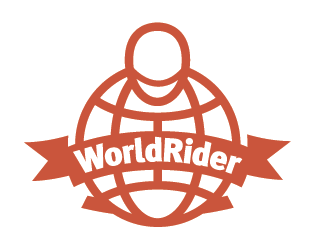Riding Through Herds of Elephants.
Botswana, like Namibia, is both blessed and cursed with dry, desolate and inhospitable deserts to the south, a massive swamp to the northwest and lush green forests and fertile greenbelts to the northeast. But getting to many of these areas can be challenging. As such, Botswana could be one of the most expensive tourist destinations in Southern Africa. The prospect of spending a night or two on an exclusive luxury houseboat on the Chobe River was enticing, but how much could this cost? Ronnie had been in touch with his contact but these questions had yet to be addressed.
It would be a long day from Maun to Nata and then North toward through Botswana’s Central District and to the Zambia border to Kasane. Passing just south of Moremi Game Reserve and then just touching the fringe of the Kalahari desert it took about three hours to get to Nata – a major crossroads and the tourist link to either the Okavango Delta, Makgadikgadi Pans or Chobe National Park to the North. We were warned repeatedly about the road north from Nata to Kasane. The elephant population in Botswana is perhaps one of the most dense in all of Africa. And the elephants here are rather hostile. We heard about a taxi carrying a handful of tourists who found themselves sandwiched between elephants as a heard crossed this road. No one survived. On a motorcycle, I’m a bit vulnerable. But at least, I hope, more maneuverable. The advice on how to handle an elephant confrontation came from all directions. The bottom line: stay away — particularly if there’s an infant or child elephant along.
Riding to Nata we witnessed the destruction of what was once a forest and now more like a desert. Elephants graze on trees. And if they can’t eat what’s on top, they use their brute force and weight to knock the tree down. Once down it’s an easy meal to dine on. And hear an hour outside of Nata there were hardly any trees. The elephants have migrated north. Unlike South Africa and even Etosha in Namibia, the National Parks in Botswana are not fenced. We could be subject to a stampede of elephants at any given point.
The road north out of Nata is fine for the first 60km. Then the curse of potholes sets. Passing through Botswana’s greenbelt, it was the first time in this country did I notice agriculture: maize, tomato and other vegetables. A seed plantation provided an interesting vista. But as the agriculture faded and vegetation grew denser we passed through the forested areas the Sibuyu, Kazuma and Ksane Forest Reserves. It was through here I had my first confrontation with elephants on the road.
Ronnie was ahead of me by 50 yards. There were no other cars on the road when a massive elephant appeared out of the bush and onto the road. Ronnie brought his GS1200 to a screeching halt. I followed. With our engines idling we watched as about eight elephants crossed the road. They stopped. A not so subtle gaze was tossed our way and as fast as they appeared they disappeared into the bush on the other side. We were told that it would be a good idea to stay close to larger motor vehicles. The larger profile would appear bigger to the biggest land mammals on the planet.
The next time we encountered these massive beasts we were drafting a Land Cruiser. It stopped and we beside it. The herd meandered across the road and this time seemed indifferent, if not clueless that we were there. Several more times during that afternoon did we see elephants. One time I didn’t even notice a massive male grazing on trees just 20 yards off the road. I blew by it at 60mph and didn’t even notice until I passed.
Riding and sharing the road with elephants and outside the known boundaries of national parks or game reserves was something I never imagined before setting out on my motorcycle adventure. But here in Botswana I found myself with elephants. Slightly apprehensive as the horror stories of their aggression perhaps put me at unease more than stories of bandits, looters, kidnappers and robbers. With any of these shady characters, I at least could try to communicate. But a five-ton elephant? Not likely.
We rolled into Kasane around 4pm. Ronnie coordinated with Ralph to meet us at Botswana immigration office in Kasane the next morning. Because the houseboats operated out of the Ichinga Lodge on the other side of the Chobe River in Namibia, we would need to exit Botswana and re-enter Namibia before setting foot aboard The Ichobezi, our floating guest lodge.
We stayed at the Chobe Safari Lodge the night before embarking on our riverboat journey.






Leave a Reply
Want to join the discussion?Feel free to contribute!